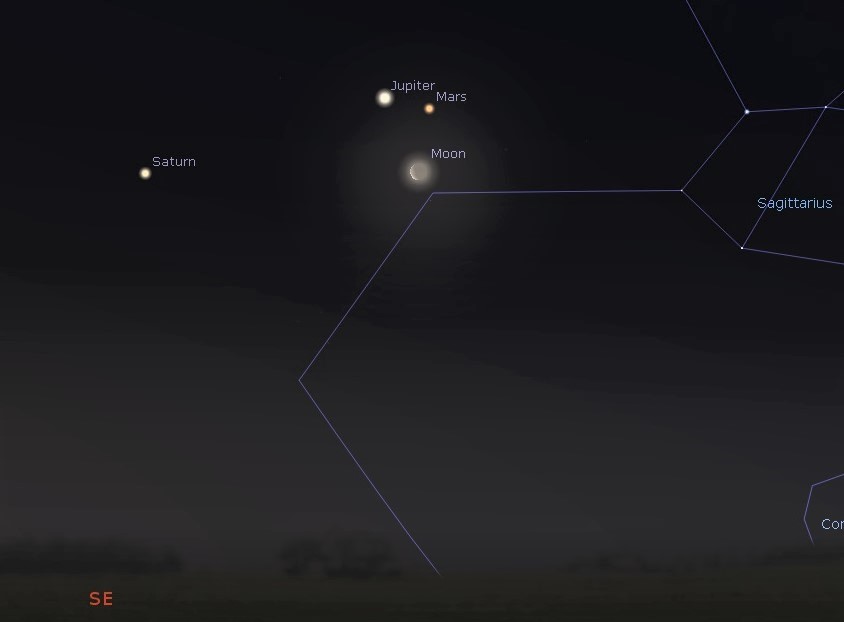This Week’s Sky at a Glance, 2020 March 14 – 21 ~by Curt Nason
With Tuesday being party time for many O’Revelers, is there anything green that we can see in the sky? Yes, but rarely. We can see stars that are red, orange, yellow, blue or white, but not green. The colours are representative of their outer temperature, with red being coolest and blue the hottest. Any star with an outer temperature corresponding to green, which is in the middle wavelengths of the visible spectrum, emits approximately equal but lesser amounts of red and blue light. This combination gives us white light, and our Sun is such a star.
Some stargazers have claimed to see green stars that are part of a binary pair with a red giant star. Green is the complementary colour of red, and it is thought that if you observe a white star after staring at a red one, the complementary after-image can make the white star look green. It is said that Zubeneshamali, the brightest star in Libra and the one with the longest common name, is green. I did see it once as a very pale green in an 8-inch telescope, but that might have been due to the power of suggestion. Uranus usually looks pale green in a backyard telescope.
The most common reason for green in the sky, although still fairly rare in New Brunswick, is the northern lights. Energetic electrons from the Sun (aka Sol, the shortest name for a star) can make oxygen atoms in our upper atmosphere emit green light in a manner similar to that of a neon light. Northern lights are seen more frequently around the equinoxes, and if electrons have escaped the Sun through holes in its magnetic field lines we could get lucky this week. If not, then take a break from the partying to look up at the constellation O’Ryan.
This Week in the Solar System
Saturday’s sunrise in Moncton is at 7:32 am and sunset will occur at 7:24 pm, giving 11 hours, 52 minutes of daylight (7:37 am and 7:29 pm in Saint John). Next Saturday the Sun will rise at 7:19 am and set at 7:33 pm, giving 12 hours, 14 minutes of daylight (7:24 am and 7:38 pm in Saint John). The Sun crosses the equator at 12:50 Friday morning, heralding the end of winter in the northern hemisphere (astronomically speaking).
The Moon is at third quarter on Monday, and it makes a spectacular binocular trio with Jupiter and Mars on Wednesday morning, with Saturn not far away. Mars slides below Jupiter on Friday, heading toward a rendezvous with Saturn at month’s end. Mercury rises 55 minutes before sunrise midweek, but with the shallow angle of the morning ecliptic it barely gets a binocular width above the horizon before being lost in twilight. Venus continues to rise toward its maximum sunset altitude, a phenomenon that repeats every eight years. The steep angle of the evening ecliptic allows an opportunity to see the zodiacal light from rural areas, appearing about 90 minutes after sunset and reaching from the horizon toward Venus.
The provincial astronomy club, RASC NB, meets in Moncton High School at 1 pm on March 21. All are welcome.
Questions? Contact Curt Nason.

